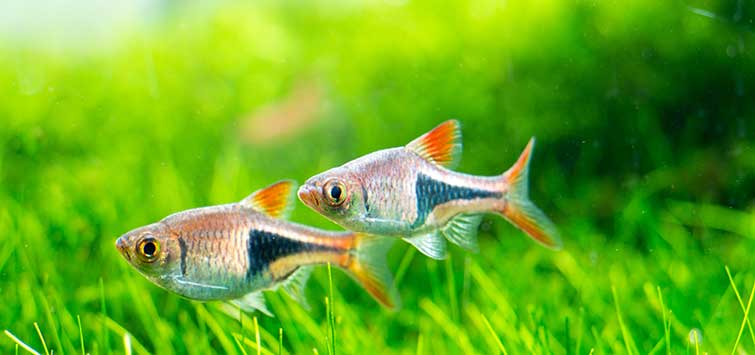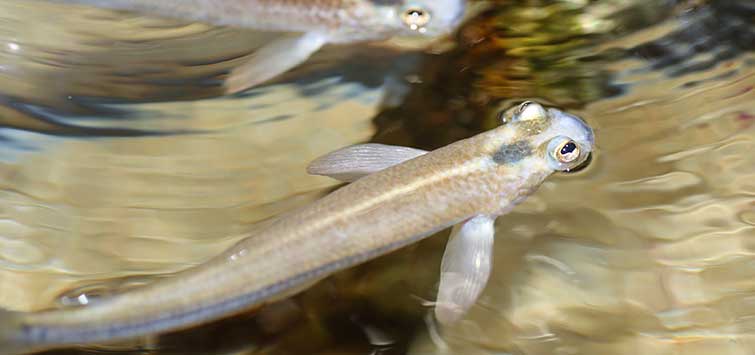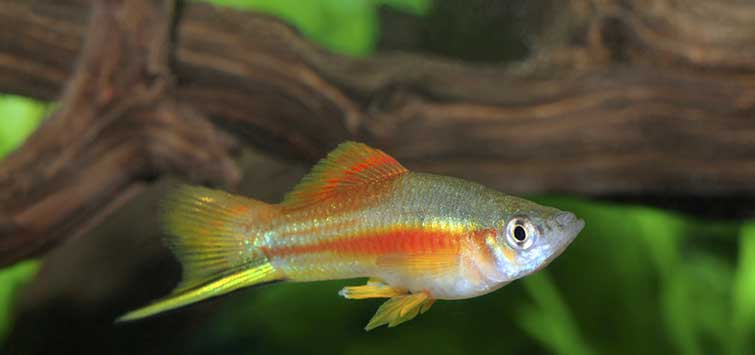Trignostigma heteromorpha
Common Names: Rasbora, harlequin, harlequin rasbora, harlequin fish, red rasbora, etc.
Type Locality: N/A
Range: Thailand, Sumatra, Indonesia
Taxonomic Troubles: Originally described as Rasbora heteromorpha. In 1999 it was placed in the new genus Trigonostigma along with T. espei, T. hengeli, and T. somphongsi. These other species are becoming established in the hobby as well and may occasionally be mistaken for <
Size: 5 cm (under 2 inches).
Preferred Water Chemistry: Tropical. Native to forest streams and peat bogs, so fairly soft and acidic conditions are best, though the fish adapt well to other water parameters.
Difficulty: A hardy species good for beginners. Very peaceful and great for peaceful community tanks.
Tank Setup: Perfect for this fish is a Southeast Asian biotope setup with driftwood and many plant thickets. It won’t harm tankmates and should have tankmates that will not harm it. Despite its small size, this is an active fish that appreciates a long tank with plen
Feeding: A micropredator. Live foods are relished, but these fish will accept just about any aquarium foods.
Breeding: Not easy to breed. For spawning the water must be soft and acidic, and preferably peat filtered as well. In a well-planted single-species tank, fry may survive to enlarge the school. This is one of the few cyprinids that do not scatter eggs. Pairs place their vents against the underside of a leaf and carefully place the eggs there. This species is spawned both as pairs and in groups.
Fish Description
The coppery background and dark triangle spot make this fish easily identified, though its congeners share those traits. In fact, the name of the new genus erected for them—Trigonostigma—is formed from the Greek roots for “triangle mark.” The species differ mainly in the shape and size of the triangle, and it is feared by some that many of the fish in the trade may be hybrids of more than one Trigonostigma species
Notes
A perennial favorite, this fish was the rasbora of the early hobby. It is a schooling species that should always be kept in groups of at least six, preferably many more. In a heavily planted tank with no large or aggressive fishes, these rasboras will spend most of their time swimming out in the open, making a delightful display. Its unusual-for-a-danionin coloration complements that of the typical streamlined and silvery or red danios and rasboras.

.png?h=595&iar=0&w=2781&hash=5FD5E69473BCC22199FBFA2FB71B6033)



